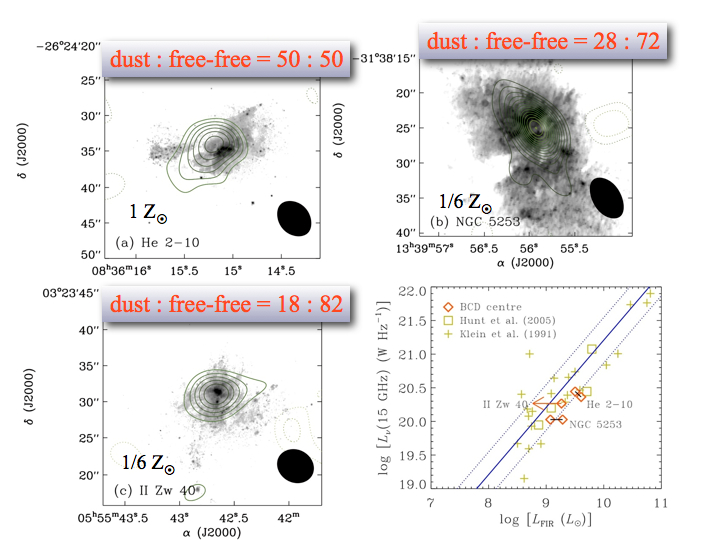|
Home \ Science \ Scientific Highlights
Scientific Highlights with the SMAObservations of Blue Compact Dwarf GalaxiesNearby blue compact dwarf galaxies (BCDs) are a unique category of galaxies that are still in the early stage of galaxy evolution in the following two aspects: (i) low metallicity, and (ii) rich gas content. We performed SMA observations of three BCDs (He 2-10, NGC 5253, and II Zw 40) to resolve their submm emission at 340 GHz (880 μm) with a subcompact configuration.
We find that the contribution from free-free emission is comparable to or larger than that from dust emission in the SMA 880 μm flux of the central starbursts in those three galaxies. In contrast, the total luminosity over the entire BCD is usually dominated by dust emission at 880 μm. Thus, it appears that the contribution from free-free emission is enhanced if we pick up the central starburst. However, as shown in the figure, if we compare the radio luminosity (free-free emission is dominated) and the FIR luminosity (total dust luminosity integrated for all wavelengths), the central starbursts in our sample just lie on the relation determined by the entire emission from BCDs. Therefore, although free-free is dominated at a particular submm wavelength in the central star-forming regions, the radio--FIR luminosity relation robustly holds. Noting the large difference in metallicity between He 2-10 (12 + log (O/H) = 8.93) and NGC 5253 (12 + log (O/H) = 8.14), we conclude that metallicity cannot be the dominant factor that causes a variation in the radio--FIR relation. In other words, even a low metallicity environment can reprocess the stellar light into FIR with a similar efficiency to a solar metallicity environment.
|
>> INTERNAL DOCU | ASIAA




